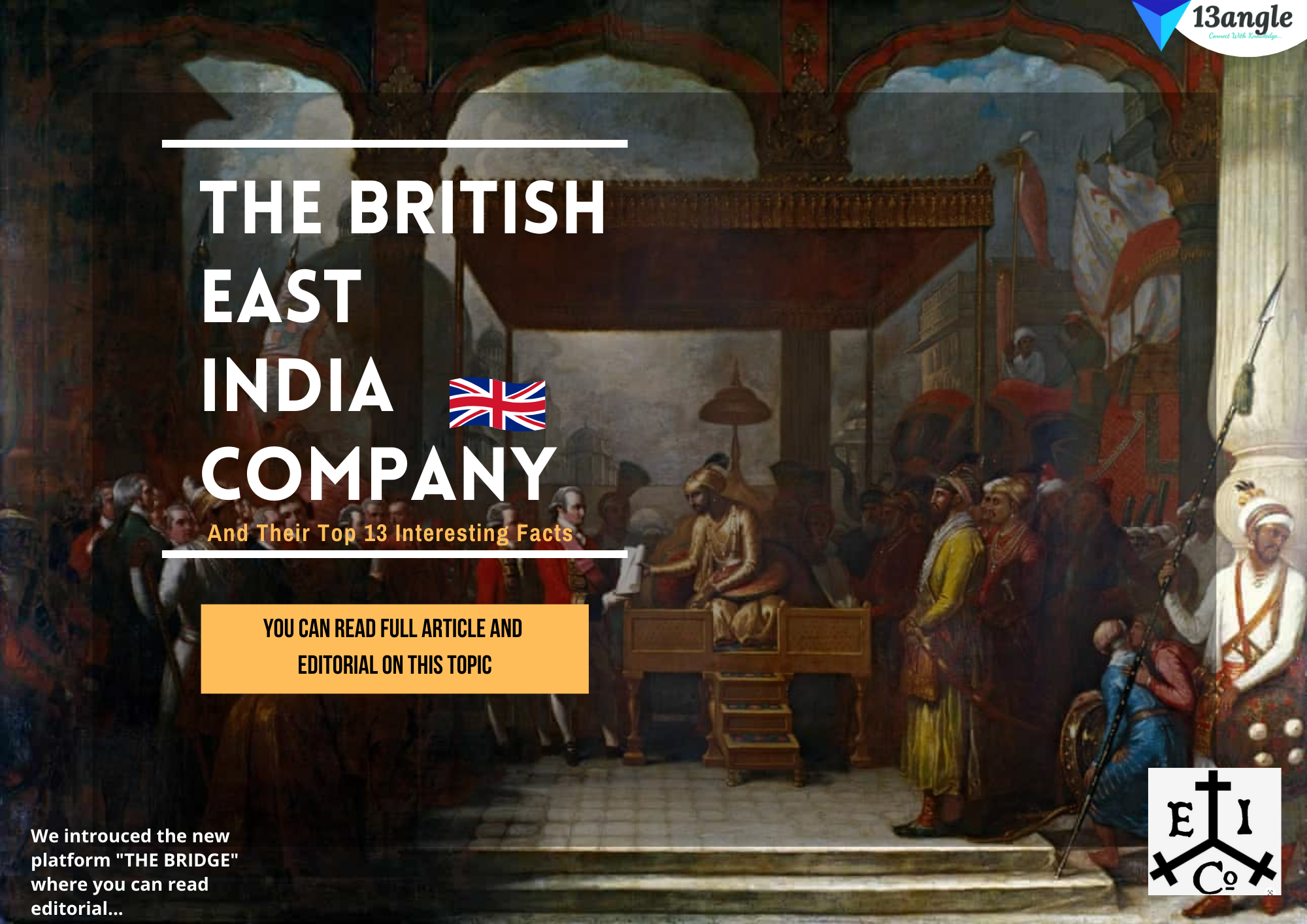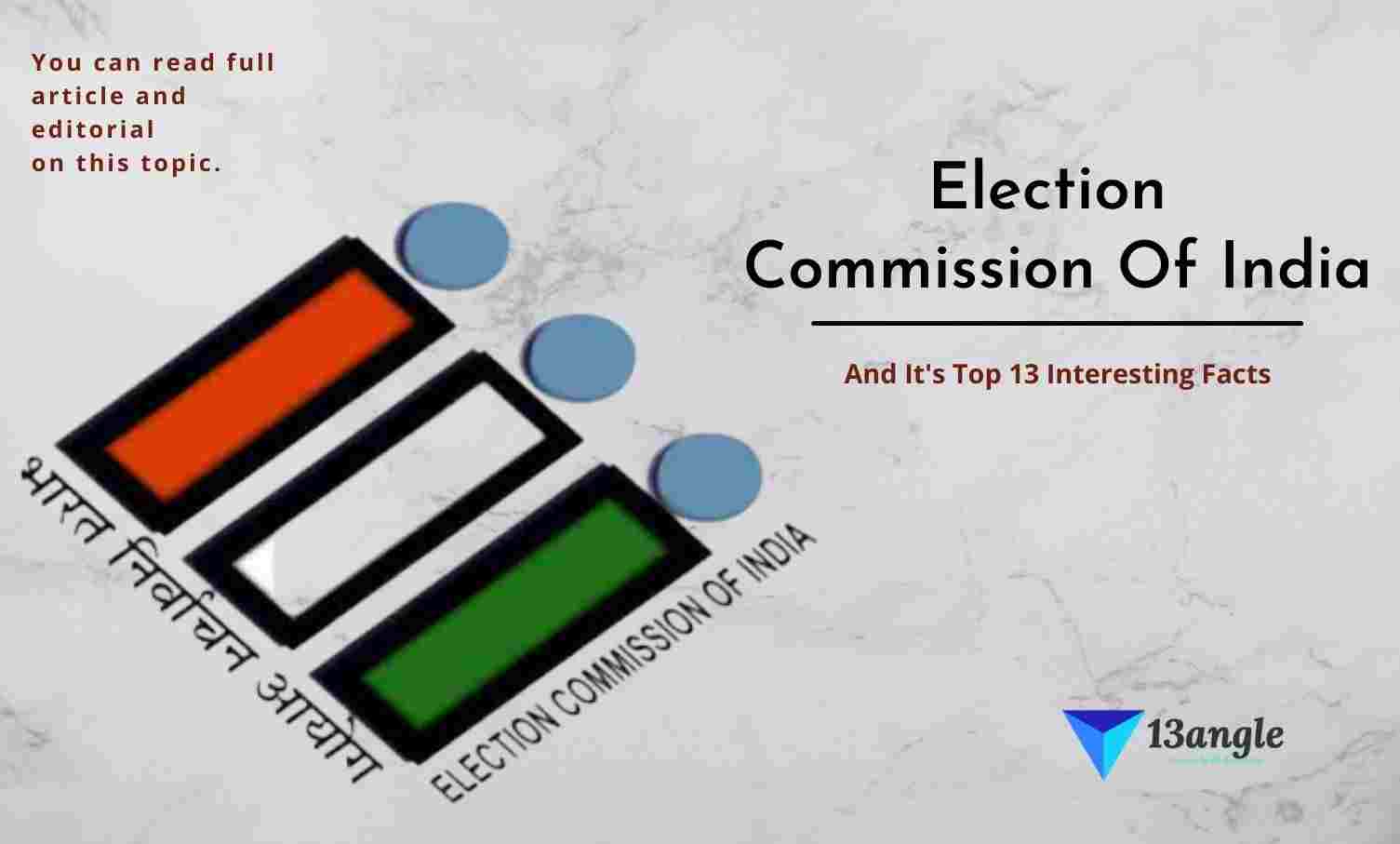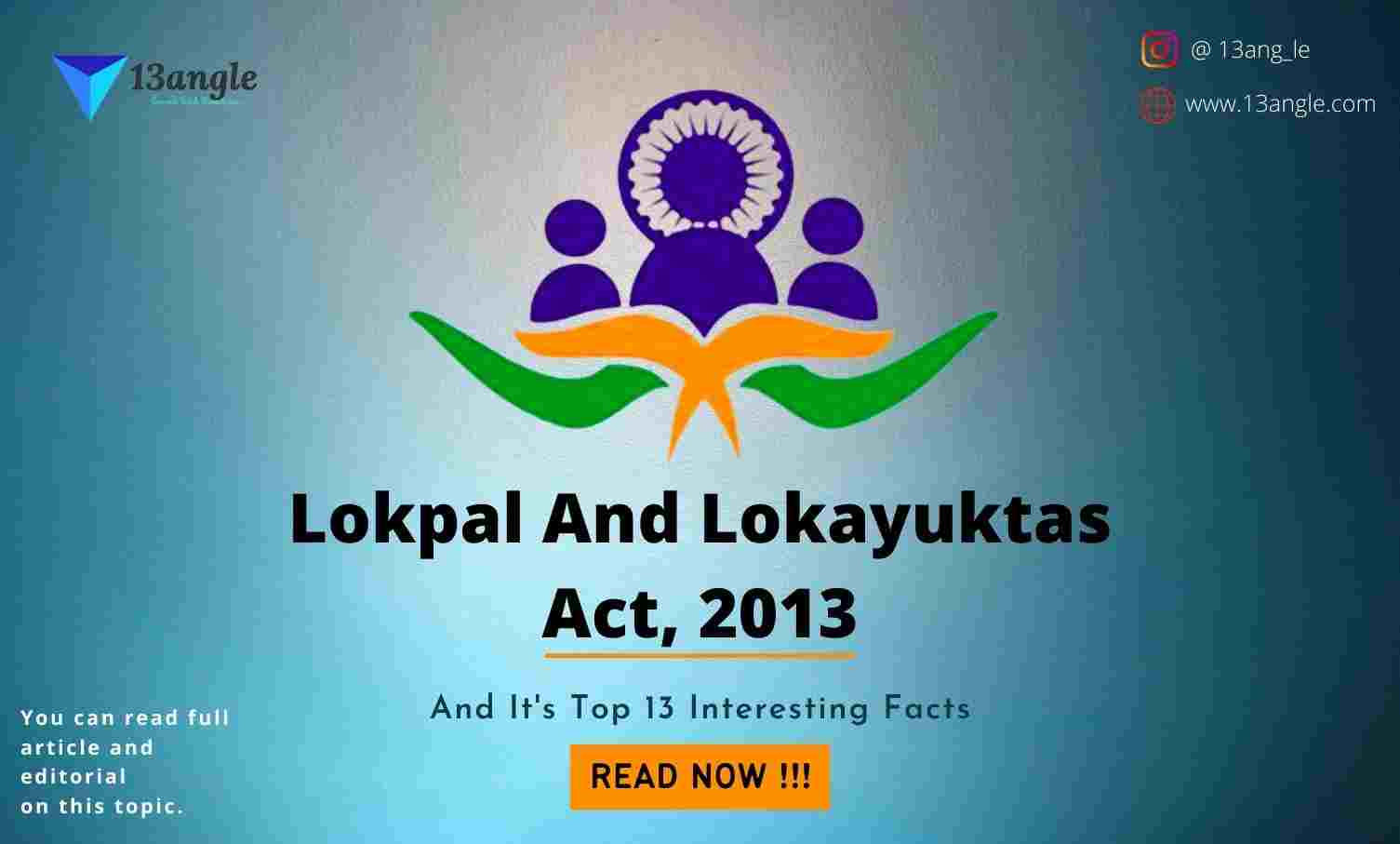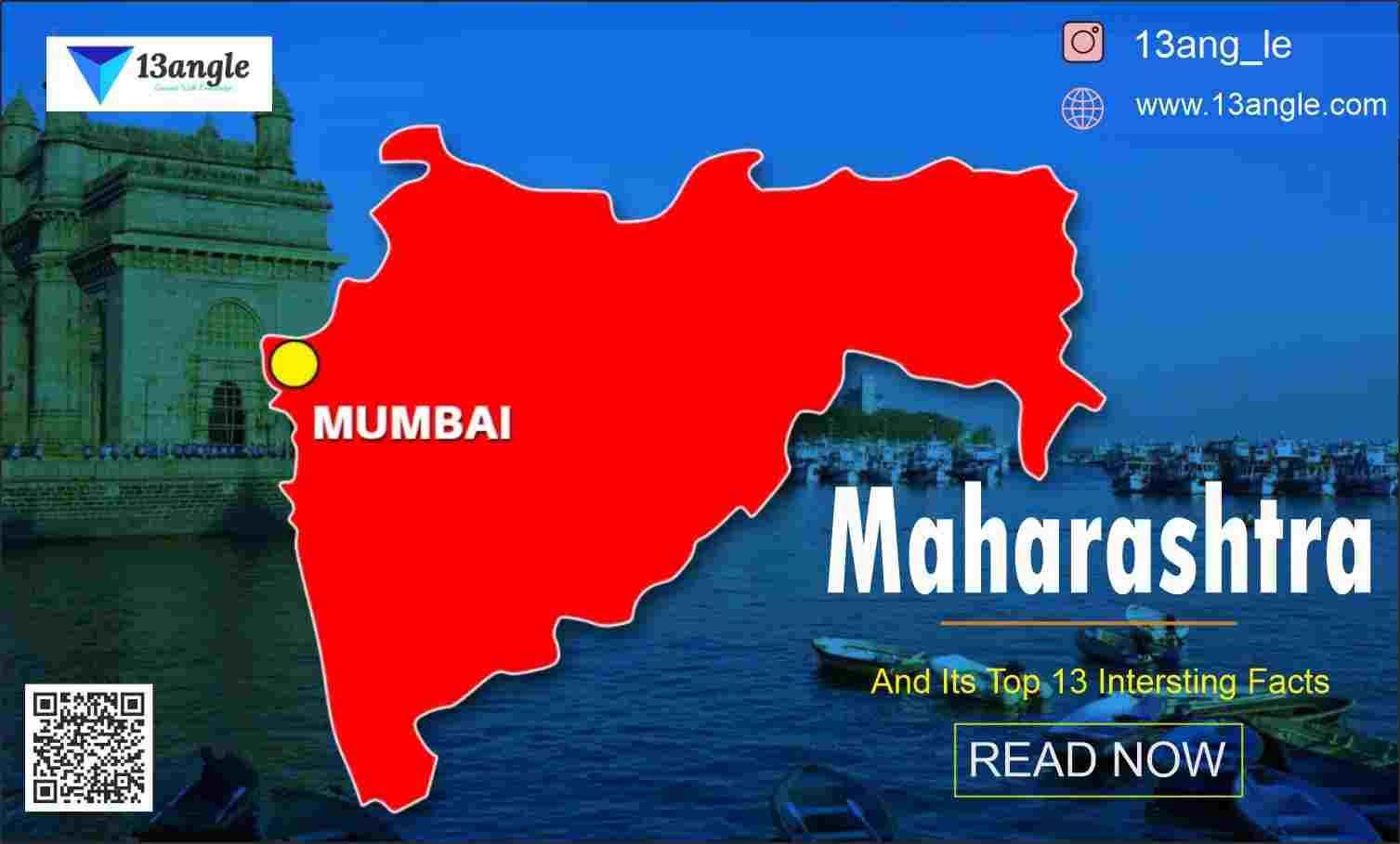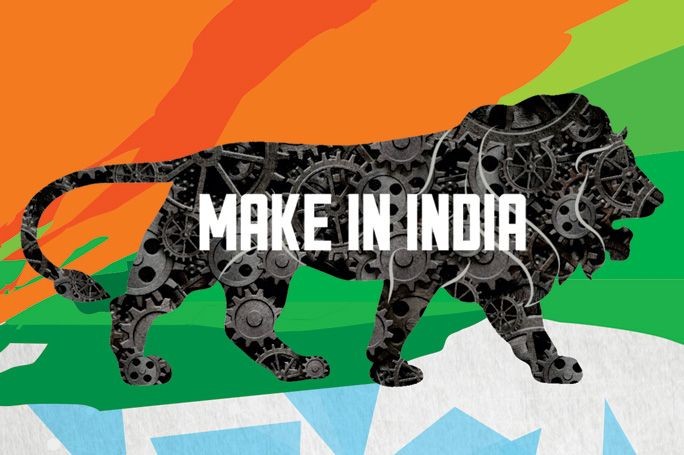
It is an established fact that since the industrial revolution took place, no country has become a major economy without becoming an industrial power first. Over the past few decades, globalization and industrialization have accelerated at a rapid pace. Most importantly, the globalization of manufacturing has played a critical role in creating jobs and raising the living standards for the middle class in emerging national economies. India is one of these emerging nations. It has performed well in the past two decades owing to its tertiary sector. To fall in line with the global patterns, the Government of India has launched the ‘Make in India’ program.
The make in India initiative was launched by Honorable Prime Minister Narendra Modi on 25th September 2014. After Jan Dhan Yojna Scheme, PM Narendra Modi announced in his Independence Day speech a new scheme to boost the manufacturing sector and foreign investors with an invitation to the world with “Come, Make in India”.
Make in India is an initiative under Atma Nirbhar Bharat Abhiyan which is dedicated to developing a modern independent India. This initiative is to promote manufacturing companies to produce goods and services in India instead of importing them from other countries and encouraging citizens to use the made-in-India products only.
- To foster the growth rate of the manufacturing sector to 12 -14% per annum in India by encouraging multinational as well as domestic companies.
- The initiative targeted 25 economic sectors for job creation and skill enhancement and aimed to transform India into a global design and manufacturing hub”.
- To substitute import of manufactured products with domestic production.
- This mission was focused on raising foreign investment and increasing the contribution of the manufacturing sector to GDP by 25% till 2025 and developing modern infrastructure.
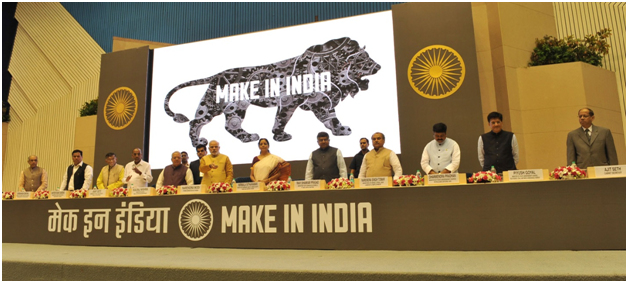
Launch Ceremony:-

The date of the launch was chosen to be of maximum advantage. Coming right after the successful insertion of Mangalyaan – a wholly indigenously built low-cost probe into the Martian orbit – the event highlighted India’s success in manufacturing, science, and technology, and all this at inexpensive costs. It also came just a day ahead of the Prime Minister’s maiden US visit. Calculated to enhance India’s attractiveness as an investment destination, the launch ceremony was held at the Vigyan Bhavan in New Delhi. The hall thronged with attendees, a number of who did not even find seats. Leading entrepreneurs and the CEOs of about 3000 companies from across 30 countries were invited to attend the launch.
Law Minister Mr. Ravishankar Prasad and Commerce Minister Ms. Nirmala Sitharaman were part of the occasion. Apart from them, a number of corporate head honchos with deep roots in the country also spoke at the occasion. These include – Mr. Cyrus Mistry (Chairman, Tata Sons), Mr. Kenichi Ayukawa (MD and CEO, Maruti Suzuki India), Mr. Mukesh Ambani (Chairman & Managing Director, Reliance Industries), Mr. Azim Premji (Chairman, Wipro Limited), Mr. KM Birla Chairman, Aditya Birla Group), Ms. Chanda Kochchar (MD & CEO, ICICI Bank), Mr. Phil Shaw (CEO, Lockheed Martin), and Mr. YC Deveshwar (Chairman, ITC).
Make In India Vision

Zero Defect & Zero Effect. Make in India initiative aims to create a favorable environment for investment, development of modern and efficient infrastructure, opening up new sectors for foreign investment, and forging a partnership between Government and industry through a positive mindset.
The Prime Minister said it is important for the purchasing power of the common man to increase, as this would further boost demand, and hence spur development, in addition to benefiting investors. The faster people are pulled out of poverty and brought into the middle class, the more opportunity will there be for global business, the Prime Minister said.
Therefore, he said, investors from abroad need to create jobs. Cost-effective manufacturing and a handsome buyer – one who has purchasing power – are both required, the Prime Minister said. More employment means more purchasing power, he added.
- The government expects to generate jobs attract much foreign direct investment and transform India into a manufacturing hub preferred around the globe.
- The aim of this campaign is to grow this to a 25% contribution as seen with other developing nations of Asia.
- To create 100 million additional jobs by 2022in the manufacturing sector.
- To increase domestic value addition and technological depth in the manufacturing sector.
Objectives
Raising the growth in the manufacturing sector to 12-14% per year.
Creation of 100 million additional jobs in the manufacturing sector by 2022.
Increasing the share of the manufacturing sector in the GDP to 25% by 2022.
Skill Development among the urban poor and the rural migrants to foster inclusive growth.
Encouraging environmentally sustainable growth.
Enhancing the global competitiveness of the Indian manufacturing sector.
Features
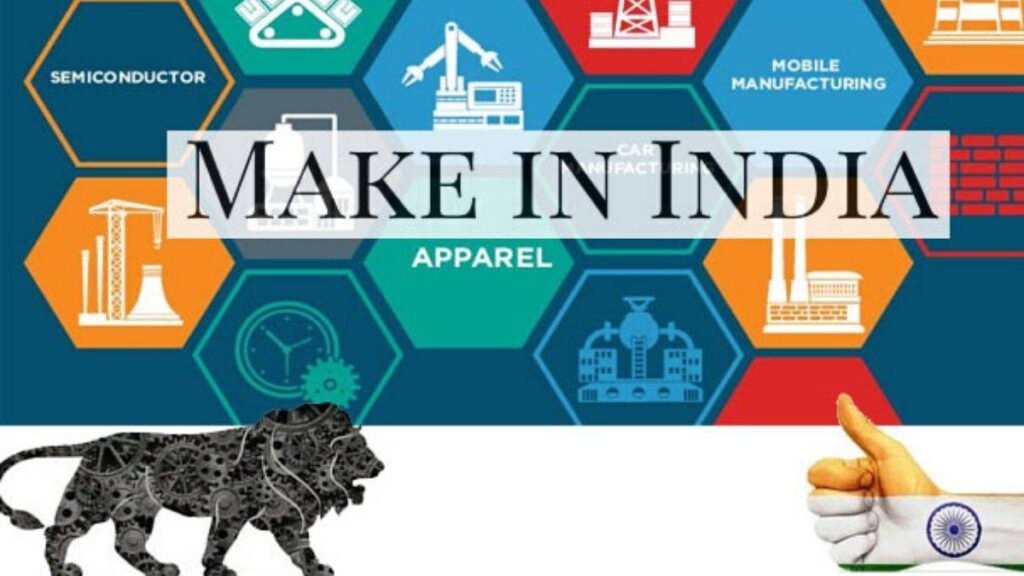
The Make in India Program is a government initiative focused on encouraging companies to manufacture in India.
This government initiative is intended to boost the domestic manufacturing sector and augment foreign investment in the country.
The make in India program is one of the key projects of the government of India. Through the Make in India program, the government intends to:-
- Revive the hitherto lagging manufacturing sector of India to enhance the growth of the economy.
- Encouraging foreign businesses to invest in India for their manufacturing needs.
- Develop India into a global manufacturing hub.
- To boost employment opportunities in the country.
Sectors Covered In Make In India
- The program covers 25 significant sectors across the economy. The primary motive of the program is to convert the nation into a global manufacturing hub. The Government has allowed 100% foreign direct investment in the below 25 sectors.
Manufacturing Sectors
- Aerospace and Defence.
- Automotive and Auto Components.
- Pharmaceuticals and Medical Devices.
- Bio-Technology.
- Capital Goods.
- Textile and Apparels.
- Chemicals and Petrochemicals.
- Electronics System Design and Manufacturing (ESDM).
- Leather & Footwear.
- Food Processing.
- Gems and Jewellery.
- Shipping.
- Railways.
- Construction.
- New and Renewable Energy.
Services Sectors
- Information Technology & Information Technology enabled Services (IT&ITeS).
- Tourism and Hospitality Services.
- Medical Value Travel.
- Transport and Logistics Services.
- Accounting and Finance Services.
- Audio Visual Services.
- Legal Services.
- Communication Services.
- Construction and Related Engineering Services.
- Environmental Services.
- Financial Services.
- Education Services.

Today’s manufacturing sector is contributing around 16% in the Indian GDP but the Make in India objective is to make a 25% contribution from the manufacturing industry by 2022. It is an easily achievable goal because right now the manufacturing sector’s contribution is around 34% in the Chinese GDP. Just because of the import of goods and services from China, the Indian manufacturing industry is contributing this much for them. We can imagine if everyone starts supporting the Make in India movement, we can help our country become a developed nation
The contributions of the Swedish companies are the best example of Make in India products. These manufacturing units are contributing to the GDP of India for a very long time. They have helped to create tons of thousands of employees over the years.
What Are The Four Pillars Of Make In India
The “Make in India” initiative is founded on four pillars, which have been observed to give a boost to entrepreneurship in India, not only in manufacturing but also in other sectors :-
1. New Processes:-
- ‘Make in India’ recognizes ‘ease of doing business as the most significant factor to promote entrepreneurship. Several initiatives have already been begun to ease the business environment. The aim is to de-license and de-regulate the industry during the entire life cycle of a business.
2. New Infrastructure:-
- The availability of contemporary and facilitating infrastructure is an essential provision for the growth of the industry. The government intends to develop industrial corridors and smart cities to provide infrastructure based on state-of-the-art technology with modern high-speed communication and integrated logistic arrangements—existing infrastructure to be bolstered through up-gradation of infrastructure in industrial clusters. Innovation and research activities are benefited through a fast-paced registration system, and accordingly, the infrastructure of the Intellectual Property Rights registration set-up has been upgraded.
3. New Sectors:-
- The government of India has observed 25 priority sectors that shall be emphasized adequately. These are the sectors where the possibility of FDI (foreign direct investment) is the highest, and the government of India shall announce the acquisition.
4. New Mindset:-
- The industry is accustomed to seeing the Government as a regulator. ‘Make in India’ intends to change this by bringing a paradigm shift in how Government interacts with industry. The Government will partner with sectors in the economic development of the country. The approach will be that of a facilitator and not a regulator.
Implementations

In the manufacturing sector, the action plans are controlled and coordinated by the Department for Promotion of Industry and Internal Trade (DPIIT).
In the services sector, the action plans are controlled and coordinated by the Department of Commerce.
The “Make in India” Initiatives
Opening up of sectors such as insurance, railways, defense, etc for more foreign direct investment.
The upper limit for foreign direct investment in the defense sector has been increased to 49%.
The establishment of the Investor Facilitation Cell under the scheme of Invest India, which helps the investors by providing services in all phases of the business, such as pre-investment, execution, and even after delivery services.
Portals like Shram-Suvidha, eBiz, etc. have also been launched.
The Government has also provided relaxation in the permits and licenses required to begin a business. Other measures are also being taken to facilitate the ease of doing business.
Industrial corridors are being developed, ports and airports have also witnessed a considerable increase in investments. The Government aims to build new infrastructure and upgrade the existing infrastructure through PPP mode – Public-Private Partnership.
Several schemes such as Skill India, Startup India, Digital India, Pradhan Mantri Jan Dhan Yojna, Smart Cities, AMRUT, Swachh Bharat Abhiyan, Sagarmala, AGNII, etc. have been launched under the aegis of Make in India.
=> The Government also launched plans for establishing industrial corridors. These corridors focus on inclusive development.
- Delhi-Mumbai Industrial Corridor
- Amritsar- Kolkata Industrial Corridor
- Bengaluru-Mumbai Industrial Corridor
- Chennai-Bengaluru Industrial Corridor
- Vizag-Chennai Industrial Corridor
Make in India Logo
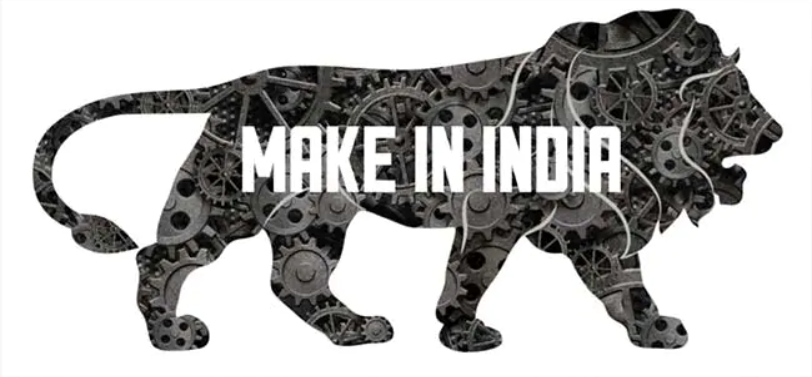
The Make in India campaign was launched by the PM just months after he assumed office to give a push to India’s economy. An RTI filed by Madhya Pradesh Activist, Chandra Shekhar Gaur disclosed that the logo was designed by the Indian subsidiary of Portland, Oregon-based Wieden+Kennedy India Limited one of the largest independently owned advertising agencies in the world. The designer design the ‘moving lion’ logo, which attracts foreign investors. The commerce ministry in its response said:
“No tenders were invited for designing Make In India logo. In 2014-15, tenders were invited by the ministry for appointing a creative agency. And on its basis, Weiden+Kennedy India Limited was chosen. And it’s this company which designed the logo for Make In India” The advertising agency Weinden+Kennedy is a largely independent organization with branches in Beijing, London, New York, Portland, Shanghai, Tokyo, Sao Paulo, and India.
Schemes Launched To Support Make In India Program

Skill India Mission: Aims to skill 10 million in India annually in various sectors to support the effective implementation of the Make in India campaign, there is a need to upskill the large human resource available.
Startup India Aims to build an ecosystem that fosters the growth of startups, driving sustainable economic growth & creating large-scale employment.
Digital India Aims to transform India into a knowledge-based and digitally empowered economy by making many services completely online.
Pradhan Mantri Jan Dhan Yojana (PMJDY): Envisages financial inclusion to ensure access to financial services, namely banking savings & deposit accounts, remittances, credit, insurance, pension in an affordable manner.
Smart Cities: Aims to transform and rejuvenate Indian cities.
AMRUT (Atal Mission for Rejuvenation and Urban Transformation): Aims to build basic public amenities and make 500 cities in India more livable and inclusive.
Swachh Bharat Abhiyan: Aims to make India cleaner and promote basic sanitation and hygiene.
Sagarmala: Aims at developing ports and promoting port-led development in the country. Several ports are being constructed and renovated under this project.
International Solar Alliance (ISA): India’s initiative aimed at promoting research and development in solar technologies and formulating policies in that regard. The headquarters of ISA is in Gurugram(Haryana).
AGNII: AGNII or Accelerating Growth of New India’s Innovation was launched to push the innovation ecosystem in the country by connecting people and assisting in commercializing innovations.
Challenges
The governments Make in India campaign has till early October 2014, attracted two thousand crores worth of investment proposal: The following are the critics faced by this campaign:
- The labor reform and policies have not been implemented properly.
- India’s ailing infrastructure facilities make it difficult to make a manufacturing hub.
- Widespread corruption is one of the challenges.
- Delay in getting regulatory clearances lead to rising in the cost of production.
Advantages Of Make In India
The Make in India campaign has had several positive developments for the country. Below are some more benefits that have been derived from this mission.
- Generating employment opportunities.
- Increasing the GDP by expanding economic growth.
- When FDI inflows become more, the rupee will be strengthened.
- Small manufacturers will get a thrust, particularly when investors from abroad invest in them.
- When countries invest in India, they will also bring with them the latest technologies in various fields.
- Due to the various initiatives taken under the Mission, India has moved up the ranks in the EoDB index.
- Setting up manufacturing centers and factories in rural areas will foster the development of these areas as well.
Failure Of Make In India
Make in India aimed to boost the GDP but on the country GDP of India has fallen drastically.
Due to the launching of too many initiatives under many sectors the loss in policy focus with inbuilt inconsistencies was created.
The proportionate investments are not yet in their intended place.
The growth rate of 12 to 14% by the industrial sector seems an impossible target to achieve.
Another failure is the investment dependency of the policies on foreign capital and global markets for production.
Reasons For Failure Of Make In India
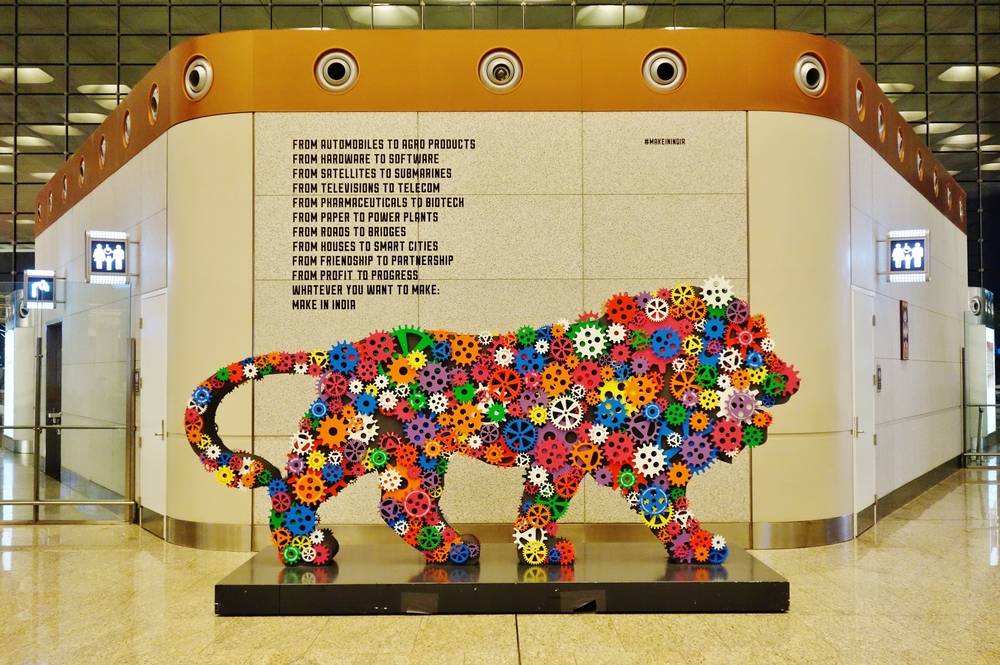
Demonetization
Poor implementation of GST.
There are no direct investment
The investments are coming from shell companies that are based in Mauritius and some are coming from the recycling of black money from India.
Make in India walks on the steps of China’s or US projects.
The productivity of Indian companies is low if it is compared with those of Thailand and China.
The reason for less productivity is the insufficient skills of Indian workers.
Also, the complicated labor regulations are the hurdles in success.
The infrastructure is not up to the mark to complete the country’s counterparts.
Corruption has always been the point of India’s setback and bureaucratic procedures are not good enough for the growth in the number of investors.
India has faced failures like the investment and growth rate due to its poor accountability and management of policies.
Criticism And Concerns
- The NDA government’s Make In India campaign has till early October attracted INR 2000 crore worth of investment proposals. The campaign has, despite this, found its fair share of critics. The topmost of these criticisms is leveled against the incumbent government. It has been felt that the government does not walk its talk- labour reforms and policy reforms which are fundamental for the success of the Make in India campaign have not yet been implemented. A number of layoffs in companies such as Nokia India cast long shadows over the campaign. A number of technology based companies have not been enthused by the campaign launch and have professed to continue getting their components manufactured by China.
Recent Outcomes

FDls in the service sector is $23.5 billion, more than three times that of the manufacturing sector which shows the Indian economy’s traditional strong points of having remarkably developed computer services.
India’s share in the global exports of manufactured products remains around 2% which is far less than the 18% share of China.
Conclusion
The program has seen its portion of success and failures. Although the intention behind introducing this campaign was novel, there were several issues in its implementation. It is a judicious mixture of administrative reforms and economic prudence, with the aim of catering to the call of people’s mandate of an aspiring India. An attitudinal shift can be observed since the launching of the program. India is not a permit-issuing authority for the investors now; instead, it functions as a true business partner.
The program had high ambitions but failed in its implementation. The policymakers introduced too many schemes and did not focus on the implementation mechanisms. Since a situation of world recession is arising due to the present COVID-19 outbreak, the chances of any success are bleak. To erode unemployment from India free and bringing development this policy is the urgent need. We can reduce poverty to a great level by solving the unemployment issue for youths. The country’s economy will surely achieve great heights after the success of the Make in India campaign. Today India’s credibility is stronger than ever. There is visible momentum, energy, and optimism. Make in India is opening investment doors. Multiple enterprises are adopting its mantra. The world’s largest democracy is well on its way to becoming the world’s most powerful economy.
Top 13 Interesting Facts About Make In India
The contribution of India’s manufacturing sector to our GDP is lower than most Asian economies, including that of poorer neighbors such as Bangladesh and Pakistan. The share of the manufacturing sector is a little smaller than the average for lower-middle-income countries and significantly lower than the average for upper-middle-income countries such as China.
Within India, there is wide variation among states in manufacturing prowess. The top 5 states account for 56% of the national manufacturing pie, and this figure has not changed much since the early 1980s. The same holds for the bottom 5 states, which account for 8% of the national manufacturing pie.
Only three Indian states: Maharashtra, Gujarat, and Tamil Nadu have a manufacturing sector compared to those of upper-middle-income countries in the world. But in two of them, Maharashtra and Tamil Nadu, manufacturing has been losing ground to other sectors of the economy over the past three decades.
Other states with a big manufacturing sector, Uttar Pradesh has grown its manufacturing sector marginally over the past three decades while Andhra Pradesh has seen the size of its manufacturing sector shrink over the same period
There are 85 international airlines connecting over 40 countries. And 3rd largest aviation market by 2020. And also it has 3rd largest rail network.
3 million Strong workforces, projects worth used 1,000 billion to be awarded.
The Delhi – Mumbai Industrial corridor is the country’s first and most advanced economic corridor. It is 1,483 kilometers long and links the country’s two most populous cities.
India is seeking to increase manufacturing’s share of GDP to 25% and create 100 million jobs within a decade by simplifying regulations, improving infrastructure, and providing other incentives.
The 10th largest in the world by nominal GDP and the 3rd largest by purchasing power parity (PPP).
The Indian government has recognized that in order to spread the benefits of economic growth to the poor, India must further develop the manufacturing sector.
Services are the most dynamic aspect of the Indian economy but the sector employs less than one-third of the country’s labor force.
India’s services sector has been a driver of the country’s economic growth and is a major contributor to the country’s GDP.
Result of the services sector, India has become a major exporter of information technology, business outsourcing and software expertise, largely through the use of skilled workers.
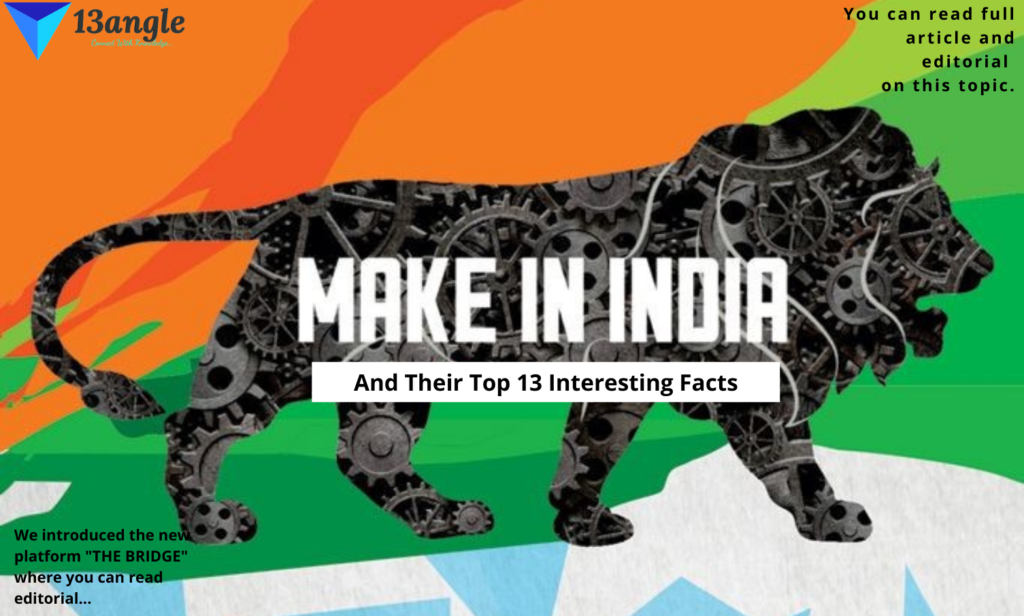
[maxbutton id=”5″ url=”https://13angle.com/blog/editorial/is-jobless-growth-a-result/” text=”Editorial” window=”new” ]
